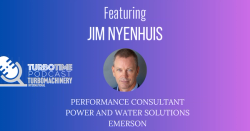
OR WAIT null SECS
© 2024 MJH Life Sciences™ and Turbomachinery Magazine. All rights reserved.
When used turbomachinery is bought
Acquiring used turbomachinery for productive utilization has become a common approach in process and utility industries—significant underlying benefits being reduced project duration and cost. Used turbomachinery, by and large, falls into two main categories. The first group is machinery that has ceased to be operational, some even removed from its location, and kept mothballed. The other group, “machinery-in-use” and substantially different from the first group, is machinery that is still in service at the time of custody transfer.
This article contains extracts from the paper, “Transferring custody of in-service turbomachinery – What sellers and buyers should consider”, presented by S T Ganesan, rotating equipment engineer at Refineria ISLA, at the 2004 Turbomachinery Symposium.
n the custodianship is transferred from one business entity (seller) to another (buyer), in order to take care of commercial interests, several technical aspects are to be considered right from the time the project is conceived. Like any project, the custodianship transfer from seller to buyer has few distinct phases, one of them being testing the turbomachinery for compliance with contractual obligation and subsequent acceptance.
The author identifies three distinct phases, from the perspective of the turbomachinery engineer, in projects involving used turbomachinery, including the in-service group of machinery. • Stage 1, Conceptual Phase—Definition of requirement or availability • Stage 2, Contracting Phase—Matching specification, review, and reconciliation • Stage 3, Execution Phase—Testing and acceptance
The list of checkpoints provided is not exhaustive in any sense but is intended to be indicative. The author forges a framework out of his experiences and encourages the readers to add checkpoints relevant to each type of machinery and to each project.
Commercial and Legal Aspects of Project
In projects such as discussed in this paper, no technical activity can take place in isolation, without commercial interests. Once commercial contracts and activities are contemplated, involvement of legal experts is essential. Therefore, active participation of commercial and legal experts, to a varying degree, in all the three stages becomes vital. The success of commercial and legal experts in Stage 1, and the first half of Stage 2, largely depends on how unambiguous the technical specification is besides the extent of technical background details available.
Potential involvement of survey engineers from financial organizations who provide a financial guarantee for the project cannot be ignored. Such involvement will lead to possible rigorous and stringent testing methods making final agreements more laborious and complicated. The contract-drafting phase should consider all such processes in advance.
The author shares the following aspects extracted from the plant notebook used during this project. • Spare parts to be included during the transfer of equipment should be clearly agreed on during the contracting phase. Neither the OEM recommended list of spares nor the list proposed unilaterally either by the seller or by the buyer might be optimum and agreeable for both parties. Such lists can only be references. Detailed assessment of spares is impractical at this juncture. Therefore, a clear and well-defined concept on spares will avoid prolonged discussions in the later stage of the project.
• Time limits for document review should be made clear in the protocol.
• When an adverse situation presents itself in the middle of the project, which might delay the handover process, seller or buyer might be forced to agree on one-sided amendments. To avoid such inconveniences, a contingency planning clause to phase out the handing over process should be included in the contract.
• If parallel operations of centrifugal compressors are involved, review the characteristic curves and the control system configuration to ensure compatibility for parallel operation between machinery designed separately and independently.
• Avoid, to the extent possible, situations of shared responsibility. Especially the situation where one party is responsible for operation and the other party for maintenance of the same machinery. This should be a last resort solution. If such a situation becomes inevitable, take time to prepare another agreement to effect the transfer of machinery taking care of the interests of buyer and seller.
What buyers should consider
Stage 1 Conceptual Phase Definition of Requirement or Availability
Stage 2 Contracting Phase Specification Match Review and Reconciliation
Prepare technical specification - Prepare overall scheme with individual equipment - Record Tolerance (margin) available - Conform to industry standard specification - List the influencing factors on the output - Consider output deterioration in time - Consider impact of process variables on the output - Is parallel operation involved?
Stage 3 Execution Phase Testing and Acceptance
Prepare technical specification - Compare original tested performance and actual performance trend. - Conform to industry standard specification. - List and quantify the influencing factors, process variable, time etc. - Compile major events, modifications, failures and repairs so far with machinery life. - Compile strength & weakness of the machine.
Review of and Reconciliation with Seller information
Understand Seller’s basis of specification good. - Prepare matches and mismatches with requirement in Stage 1 - List the assumptions clearly and separately. - Prepare framework for Testing. - Agree on method of testing and evaluation of test results including acceptance tolerance. - Define and agree on responsibilities.
Review of and Reconciliation with Buyer information
Understand Buyer’s basis of specification good. - Prepare matches and mismatches with availability per Stage 1 - List the assumptions clearly and separately. - Agree on framework for Testing. - Formulate method of testing and evaluation of test results including acceptance tolerance. - Define and agree on responsibilities.
Conduct test, review results and handover the unit.
Conduct the test. Involve the Buyer to witness the test. - Prepare and issue the test report. - List deviations from the contract with causes and remedial measures if applicable. - Issue the signed Acceptance Certificate.
Note: The generic list is indicative and from technical perspective only
Witness test, review results and accept the unit - Participate actively in test and witness the test. - Review the test report issued by Seller. - List deviations from the contract with impact. - Issue review of the report. - Review the Acceptance Certificate and sign.
• If certain readings cannot be practically taken during the testing, it should be evaluated if there is substitute measurement possible in order to continue the test. Later on the original provision can be restored. In a case study, the gearbox bearing temperature resistance transducer (RTD) was defective in Gas Turbine 2. The gearbox had to be opened to install a new RTD. The entire test was not jeopardized for want of this RTD. Instead the bearing return-oil temperature was substituted as a corroborative measure for bearing temperature and the test was continued. • The instrumentation system test should include checking the set value at the time of action and not just action like on or off.


